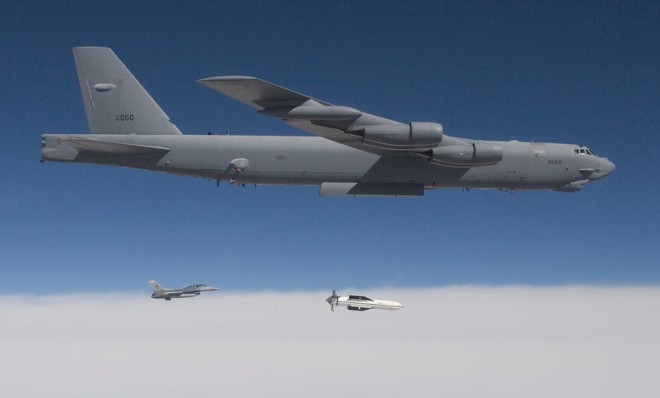Why the Pentagon is beefing up its 'bunker buster' bombs
The Massive Ordnance Penetrator (MOP) can reportedly hit targets 200 feet below ground

Most of America became aware of "bunker buster" bombs during Operation Desert Storm in 1991. The original was a laser-guided bomb known as the Guided Bomb Unit-28 (GBU-28) — a weapon so effective it was still used 10 years later when America went to war in Afghanistan.
Now the Pentagon has announced improvements to its latest bunker buster, the Massive Ordnance Penetrator (MOP), which happens to be the U.S. military's largest conventional bomb ever. According to the Wall Street Journal, the United States spent $330 million developing just 20 bombs. Here's what you should know:
What do we know about these new bunker busters?
Subscribe to The Week
Escape your echo chamber. Get the facts behind the news, plus analysis from multiple perspectives.

Sign up for The Week's Free Newsletters
From our morning news briefing to a weekly Good News Newsletter, get the best of The Week delivered directly to your inbox.
From our morning news briefing to a weekly Good News Newsletter, get the best of The Week delivered directly to your inbox.
The 5,000-pound GBU-28 was large for its time, but today's MOP weighs an astonishing 30,000 pounds. First tested in 2007, it was pronounced ready for combat in 2012. Now the Wall Street Journal reports that Pentagon officials have improved it and have been touting its new capabilities to Israeli military and civilian officials during the last couple of weeks.
The improvements include a new detonator fuse meant to help the bomb burrow through granite and steel, an improved guidance system, and the capability to counter electronic missile defense systems. In the end, this 20-foot-long bomb is designed to penetrate 200 feet below ground before setting off 5,300 pounds of explosives, according to ABC News.
Why are we building them?
Almost exclusively to hit the Fordow Enrichment Plant, Iran's largest nuclear facility, located under a mountain near the city of Qom. It's buried so deep that, according to the Wall Street Journal, experts believe it would take several MOPs to destroy it, with one creating a crater and the rest using the improved guidance system to dive in after it and destroy the complex.
A free daily email with the biggest news stories of the day – and the best features from TheWeek.com
The MOP was upgraded because officials didn't believe the previous version could penetrate Fordow. The bombs could also be used to strike North Korea's less protected nuclear bunkers.
The message the MOP sends is clear: While the United States almost certainly won't use nuclear weapons, it still has a pretty formidable arsenal capable of taking out even Iran's most secure facilities.
"We are committed to trying to resolve concerns about Iran's nuclear program diplomatically," Caitlin Hayden, White House National Security Council spokesperson, told the Wall Street Journal. "But, as President Obama has made clear: The U.S. will not allow Iran to acquire a nuclear weapon. The onus is on Iran and it knows that time is not unlimited."
Keith Wagstaff is a staff writer at TheWeek.com covering politics and current events. He has previously written for such publications as TIME, Details, VICE, and the Village Voice.


